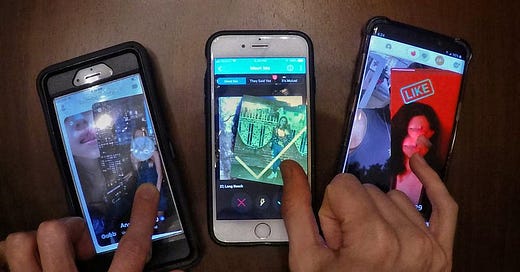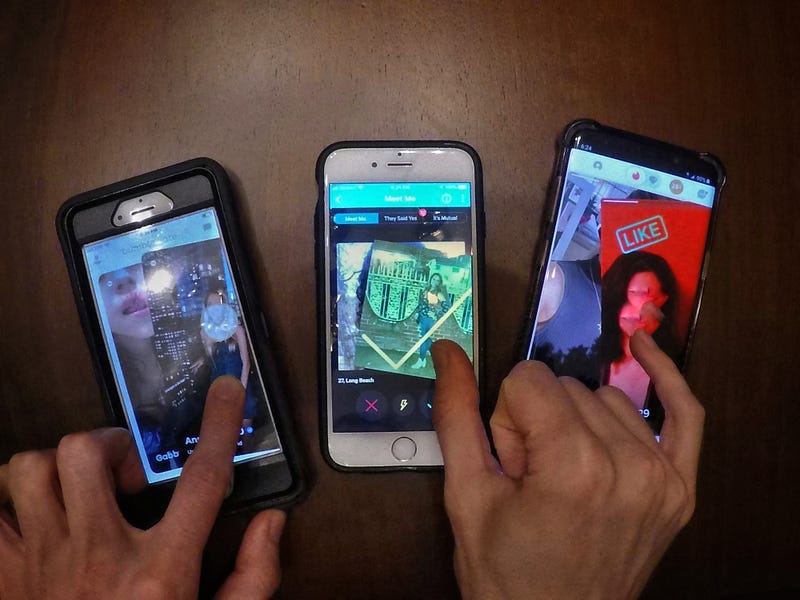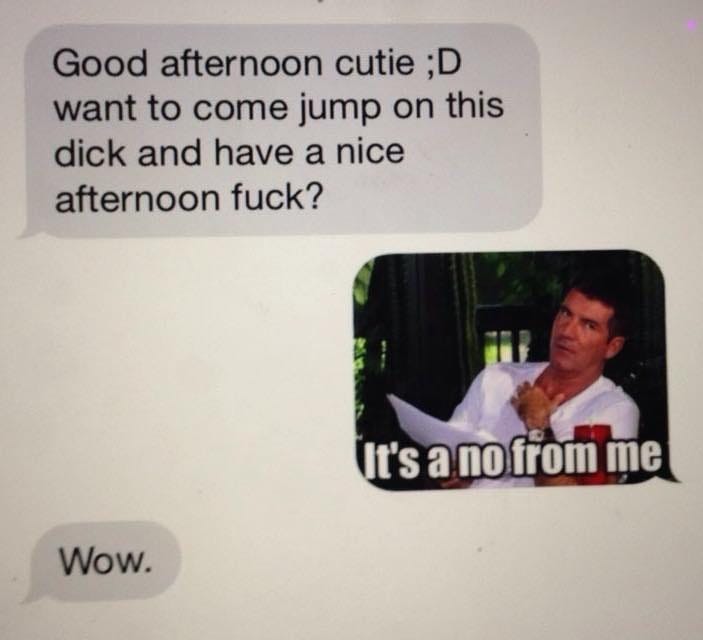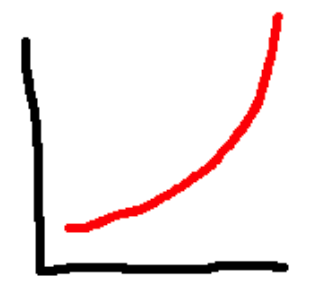The Two Greatest Failures of Modern Dating Apps
modern dating apps fail to capture two critical variables, to the endless chagrin of frustrated online daters
I’ve been a dating consultant for over 8 years, and it just so happens that two of the most common things that I hear people complain about are also two of the most difficult problems for the dating industry to solve.
In our modern swipe-happy culture, it’s fairly easy to gauge physical attraction along with a rough sense of social & intellectual compatibility by simply thumbing through someone’s photos and casually perusing their dating profiles. Mirror selfies? Nahhh, swipe left. Cooking dinner in an apron while high-fiving his furry culinary companion? That’s the ticket! Sign me up.
But as I reflect on the state of the dating industry in 2019, I can’t help but notice that there are two critical variables that most dating apps fail to capture, to the endless chagrin of frustrated online daters.
I call those variables realtime intent and future trajectory.
Realtime Intent — what do you actually want to do right now?
Realtime intent is what you actually want to do right now. Not tomorrow, not next week, but right this moment. Do you want to have some flirty chatting? Do you want to meet up for food? For sex? Do you have no intention of going outside, but you want to spend some time discussing fun date ideas for this coming weekend?
Realtime intent can best be visualized on a spectrum that goes from strictly sex all the way to committed relationship.
When a dating app fails to address realtime intent, you end up with situations like this:
Future Trajectory — where do you see yourself, relationally, in the coming weeks or months?
Future trajectory, on the other hand, is your best available estimation for what you’d like to see happen with your dating life in the coming weeks or months. Are you gearing up for a long-term, committed relationship that could lead to marriage? Maybe you’re new to a city and strictly looking for new friends and low-commitment dating as you explore your options? Perhaps you’re freshly out of a long-term relationship and looking for to find some activity partners to do fun things with as you rebuild your sense of self and rediscover things you love doing?
Your future trajectory factors in your existing commitments to work, your expected travel schedule over the coming weeks or months, the people you’re currently seeing casually, and your expected attentional availability over the coming weeks.
Future trajectory can be visualized by an investment curve that might horrifyingly remind you of high school algebra.
Now, part of the struggle of modern dating is that these two variables can be *highly* dependent on *who* you’re meeting, as well as the moment to moment decision calculus that every dater must make when face to face with their suitor.
I’ve seen devoutly monogamous commitment seekers opt for a momentary lust-filled fling with someone who’s just passing through their city, or with someone who they randomly clicked with at an event that night. While their future trajectory may have been something more stable and committed, their realtime intent may have shifted in light of their physiological and/or hormonal response to encountering this new person. Similarly, most of us have heard stories of people who’ve sworn off relationships…up until the point where they “met the one”, in which case their future trajectory was forever altered by virtue of their experience meeting someone who jolted them out of their preexisting expectations.
When and How Our Intentions Shift…
Capturing both realtime intent and future trajectory can be an immensely tricky process, because realtime intent, per its name, may change from one moment to the next. Let’s consider two Tinder users, both of whom share an future trajectory of consistent escalation into a committed relationship.
However, one user only logs into Tinder on Sunday evenings, while the other only logs in on Friday nights. Now, the types of users logging into Tinder on a thirsty Friday night looking for a quick local hookup tend to have radically different realtime intents from the types of users messaging their suitors on Sunday evenings to set up brunch or outdoor adventure dates for the upcoming weekend. So despite the fact that both our hypothetical users share a future trajectory, they may encounter radically different types of users based on when the log in, regardless of their realtime intent. But the nature of who you encounter often dictates your understanding of the social etiquette of the community, so our Sunday night user may find the experience quite pleasing, while our Friday night user may feel that the entire app is a cesspool.
Moreover, it’s not hard to imagine an individual user experiencing a shift in their realtime intent over the course of a week. Plenty of commitment-seeking individuals are willing to settle for a temporary hookup if the moment is right, and it’s fully possible that the very same user who is using their Sunday nights to queue up relationship-oriented dates is using their Friday nights to queue up some temporary hookups, simply because sexual needs and desires don’t disappear in the absence of a committed relationship.
How Dating Apps Can (and Should) Capture Realtime Intent and Future Trajectory
What can dating apps do to better capture these variables? Honestly, it’s difficult to capture both, because even if users maintained a fixed intent from day to day (they don’t), users also find that their intent can shift in direct response to the attractiveness or imminent availability of the person on the other end of the screen (e.g., “You’re free for lunch right now? And you’re only a block away? Alright, fuck it, let’s do it!”). Moreover, relationships, ever built upon compromise, never fail to upset individuals’ future trajectories — how many times have we heard the story of someone leaving their job or academic program to elope with a new lover?
Most dating apps tend to remain relatively agnostic toward their users’ future trajectories. We tend to call this category “casual dating” and it encompasses apps like Tinder, OkCupid, and PlentyOfFish. Some apps, like Match and eHarmony, position themselves as strictly for serious daters with committed relationship trajectories in mind, while on the other side of the spectrum we have apps like Pure and Fling which a strictly short-term hookup focused. But due to the ever-changing nuances of realtime intent, you’ve got men trying to send dickpics on eHarmony, and people meeting the loves of their lives on hookup apps.
Is there a better way for dating apps to capture more of the nuance in users’ realtime intent?
Apps like Happ’n offer creative features that let you signal an intention for 4–6 hours, e.g. “take a walk”, “get drinks”, etc., but these efforts typically fall flat for two reasons. For starters, there’s immense social stigma around hookup-seeking, so most users with realtime intents that are more sexual in nature are forced to disguise that intent as something else, to the endless frustration of unsuspecting daters — seriously, women around the world have taken to boldly including “NO HOOKUPS” in their dating profiles at staggering rates. Moreover, I mentioned at the outset that realtime intent not just incredibly finicky based on time of day and week, but is also perhaps most strongly influenced by the degree of spark/compatibility/attraction newfound suitors feel toward one another upon meeting. I’ve personally met people from sex apps and opted to simply share tea and friendship, while finding myself in sudden and heated one night stands with people who were otherwise seeking strictly committed relationships.
Capturing Intent and Trajectory through Algorithms and Good UX Design?
Would it be unrealistic for dating apps to apply their artificial intelligence and machine learning algorithms toward grouping your matches based on the ones you’d be more likely to date, vs. those you’d strictly want to diddle? Would users find that personally offensive?
Perhaps Bumble has gone the furthest thus far in the quest to tackle realtime intent. Over the last few years, Bumble has rolled out three unique segments of its app — Date, Bizz, and BFF — and upon opening the app, users must choose their intent. One would hope that users opting into Bumble Bizz would receive far fewer dickpics on average, but let’s be real: what happens when you match with a cutie on Bumble Date and then that same cutie shows up a few days later in your Bumble Bizz queue? Perhaps it’s good that we as users are being forced to recognize the multifaceted nature of the humans around us — that the same person we’re salivating over on a Friday night is in fact a career-oriented professional who is deserving of our respect and civility, perhaps in addition to (as opposed to in spite of) our sexual intentions?
Perhaps we’re be better off experiencing perpetual reminders that our current sexual intentions do not justify behavior that would render someone else uncomfortable or offended, even despite our protestations that “it’s a Friday night and you’re on Tinder, what else did you expect?” There are legal efforts now to make the sending of dickpics illegal — after all, if indecent exposure is a misdemeanor, how is showing someone your junk in digital fora that much different? Maybe if we toned down our objectification and adopted a mantra of “the person on my screen, in addition to being a veritable sex god, is also a committed professional, family member, and citizen whom I may well meet and come to appreciate in a dozen contexts before we ever develop any form of sexual chemistry.” Maybe, just maybe, the online dating world could then become a better place.
How Can We Better Signal Our Intentions?
One important question remains: how might we as users better signal our realtime intent and future trajectory?
Sure, we can check the “looking for committed relationship” or “looking for casual sex” boxes on our profiles, but those little boxes hit a weird hazy area between intent and trajectory that doesn’t really help us understand how to proceed as we take the conversation offline. When we’re casually texting someone, or in the middle of a date, how might we signal our desire to shift the nature of our dynamic in any particular direction?
How to indicate trajectory and intent
Personally, I try to indicate my future trajectory through my profile design and through my choice of which app I’m using in the first place. Then, to indicate my realtime intent, I turn to creative and oftentimes intentionally open-ended date suggestions.
App Choice
Most dating apps fall along a spectrum of possible trajectories. Here are a few popular dating apps off the top of my head, along a rough spectrum of which trajectories they tend to capture:
Kink/BDSM/Polyamory: FetLife, Feel’d, #Open, Kindra
Sex/Flirting: Pure, Badoo, POF
Simply Meeting People: Bounce, Filter Off, Inner Circle
Casual Dating: OkCupid, Tinder, Bumble
Serious Dating: Hinge, The League, Coffee Meets Bagel
Marriage: Match, eHarmony
There are also dozens of LGBTQ+ apps serving people across the spectra of gender, orientations, and intent. Consider Lex, Her, Scruff, Grindr, Rela, and Taimi.
I use my profiles on these apps to indicate which trajectory I’m mostly aiming for, so that my prospective suitors can quickly get a sense of how, when, and where they might see themselves engaging with me and my life.
Date Suggestions
Next, when it comes to open-ended date suggestions, I usually pick a few days in the month when I can construct elaborate, super fun and memorable, multi-part date ideas that I can embark upon either solo, or with company. Next, I let my prospective dates vote with their feet so they can either show up at critical junctures on my date day, or specifically request to have 1-on-1 time for some portion of the day/night, in which case I enthusiastically cordon that off for them and let our realtime intent follow the flow of the date segments they opted to join me for!
I’ll be following up from this post with a far more in depth post about profile designs and creative date suggestions, so stay tuned!
As a dating consultant, I frequently coach individuals in how to deal with these sorts of tricky scenarios of intent, flirting, escalation, etc., so please do reach out to me at Dateworking.com if you need any assistance.
Do you have any particular recommendations for how to signal or shift realtime intent? Comment with your best stories and practices!
Other Posts From This Author…
• The Friendship-First Approach to Dating
• How To Say “No” Without Lies, Flaking, or Fadeaways
• How to Have the “Are We Exclusive” Talk
• The Power of a Personal Connection
About the Author…
I’m Steve Dean, an NYC-based online dating consultant.
I offer customized consultations to individuals who need help with dating & relationships, as well as dating sites who need help with product strategy and growth.
I like to write and podcast about dating, relationships, and how to get connected to awesome jobs, roommates, and events. If you’d like to keep tabs on what I’m working on, you can follow my Patreon page, or connect with me anywhere:
Patreon | Quora | Twitter | LinkedIn | Instagram | Dateworking Podcast










